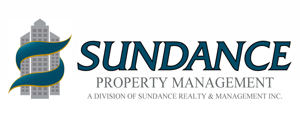
Preventative maintenance is the process of regularly inspecting, repairing, and servicing the systems and equipment of a commercial property to prevent breakdowns, malfunctions, and costly repairs. Preventative maintenance can help extend the lifespan of your assets, improve the safety and comfort of the occupants, and reduce the overall operating costs of the property.
Some key elements of preventative maintenance for a commercial property are:
HVAC system
The heating, ventilation, and air conditioning system is one of the most important and complex systems in a commercial property. It regulates the temperature, humidity, and air quality of the indoor environment. A well-maintained HVAC system can improve energy efficiency, reduce greenhouse gas emissions, and prevent health issues such as mold growth, allergies, and respiratory infections.
Common preventative maintenance tasks for the HVAC system include:
- Changing or cleaning the air filters every month or as recommended by the manufacturer.
- Inspecting and cleaning the ducts, coils, fans, blowers, and vents annually or semi-annually
- Checking and adjusting the thermostat settings and controls periodically
- Lubricating the moving parts and replacing worn belts and hoses as needed
- Testing and calibrating the refrigerant levels and pressure gauges regularly
- Scheduling a professional tune-up service at least once a year
Plumbing system
The plumbing system provides water supply and drainage for the commercial property. It consists of pipes, valves, faucets, fixtures, drains, pumps, water heaters, and other components. A well-maintained plumbing system can prevent leaks, clogs, floods, corrosion, and water damage.
Common preventative maintenance tasks for the plumbing system include:
- Inspecting and repairing any leaks or drips in the pipes, valves, faucets, and fixtures
- Flushing and cleaning the drains and traps monthly or quarterly to remove any debris or buildup.
- Testing and adjusting the water pressure and temperature settings periodically
- Replacing or repairing any damaged or faulty parts such as washers, gaskets, seals, etc.
- Servicing and flushing the water heater annually or as recommended by the manufacturer.
- Installing water-saving devices such as low-flow faucets, showerheads, toilets, etc.
Electrical system
The electrical system provides power and lighting for the commercial property. It consists of wires, cables, outlets, switches, circuit breakers, panels, transformers, generators, and other components. A well-maintained electrical system can prevent power outages, surges, shocks, fires, and electrocution.
Common preventative maintenance tasks for the electrical system include:
- Inspecting and testing the wiring, cables, outlets, switches, circuit breakers, panels, etc. for any signs of damage or wear
- Replacing or repairing any frayed or exposed wires or cords
- Tightening any loose connections or terminals
- Labeling and organizing the circuits and panels for easy identification
- Updating or upgrading any outdated or inefficient equipment such as lighting fixtures, bulbs, appliances, etc.
- Installing surge protectors, backup generators, smoke detectors, fire extinguishers, etc.
By following a regular preventative maintenance schedule, you can ensure that your property is in optimal condition, enhance its value, and avoid costly repairs in the future.
